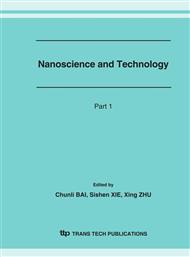p.97
p.101
p.105
p.109
p.113
p.117
p.123
p.127
p.131
The Effects of Organic Solvent on the Electrospinning of Water-Soluble Polyacrylamide with Ultrahigh Molecular Weight
Abstract:
The effects of an organic solvent on the electrospinning of water-soluble polyacrylamide with ultrahigh molecular weight were investigated. An organic solvent, DMF, was introduced to the polyacrylamide aqueous solution and subsequently, transparent spinning solutions were obtained. The spinning solution was electrospun at the voltage of 10 kV and the electrospun products were examined by scanning electron microscopy (SEM). Results indicated that all the electrospinning products including colloidal particles, beaded fibers and smooth fibers were fabricated in the DMF/H2O bi-component solvent and the morphology of electrospun products changed from smooth fiber to beaded fiber with the increasing amount of DMF used.
Info:
Periodical:
Pages:
113-116
Citation:
Online since:
March 2007
Authors:
Price:
Сopyright:
© 2007 Trans Tech Publications Ltd. All Rights Reserved
Share:
Citation:


